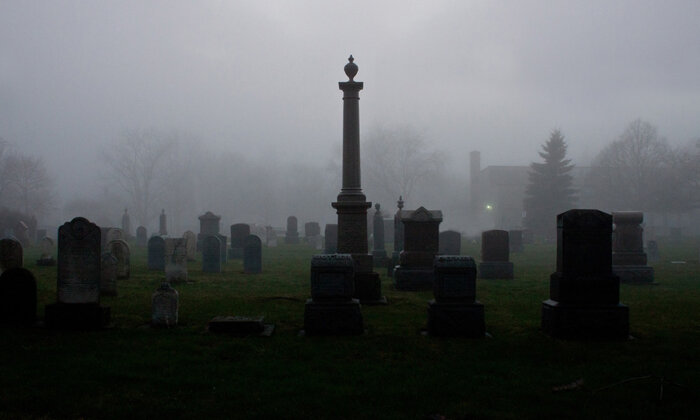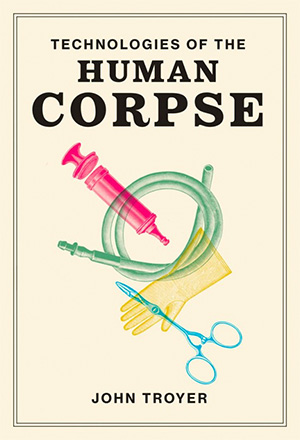Coronavirus Is Exposing Our Failure to Manage the Logistics of Death

We need to talk about dead bodies. Specifically the dead bodies being produced by Covid-19.
This is different from saying we need to talk about death and dying (which we also need to do). I mean instead that we should focus our minds on what the human corpse means in this new pandemic reality.
Consider the number of dead bodies in the world before coronavirus. Based on global mortality statistics, approximately 56,842,500 humans died over the course of 2019. That’s roughly 155,732 people a day.

In the U.S., approximately 2,898,060 people died that year, which means about 7,939 a day. In the U.K., the death rate for 2019 was 620,268, averaging 1,700 people a day.
It is easy to gloss over these statistics, since most of us never really think about millions of dead bodies. But what these numbers illustrate is that dead bodies are an everyday constant, we just don’t pay attention to them unless our job directly involves the dead.
So dead bodies are completely normal -– until suddenly they’re not. Until a novel virus sweeps the globe and produces a dead body count with life-altering repercussions.
In order to manage and cope with the millions of dead bodies produced every year, different countries create what I call a “national death infrastructure” or NDI. The various parts of this infrastructure range from the local (a neighborhood cemetery) to the global (systems in place for international repatriation). But crucially, the National Death Infrastructure is largely invisible to most of our lives.
The coronavirus pandemic is relentlessly demonstrating what happens when national death infrastructures are not prepared for an unplanned spike in human mortality.
Now Covid-19 is making NDIs visible. Indeed, the coronavirus pandemic is relentlessly demonstrating what happens when NDIs are not prepared for an unplanned spike in human mortality. We have seen thousands of coffins unattended in Italy, temporary emergency morgues in New York, and Spanish officials storing dead bodies at an ice rink.
Disturbing as many people find these news stories, everything happening to manage Covid-19 corpses is from various “mass fatality” and “disaster victim identification” playbooks. I know this because, as director of the Centre for Death and Society at the University of Bath, I’ve participated in consultations on governmental postmortem preparedness.
What’s different, of course, is that most people already oblivious to the NDI are wholly unprepared to see dead bodies rapidly produced in multiple countries, at the same time, and reported hourly on the news.
Imagine though, if details were broadcast for a year on how every one of the around 56 million people across the planet died – how they died and in what circumstances. Seeing this kind of detail in death might help people realize how important the infrastructure dealing with dead bodies really is, and why it needs to be financially supported by national governments.
Because right now, huge numbers of families cannot mourn their dead in the ways they expect to. We have seen this situation before with AIDS-related deaths, where next-of-kin were told a funeral was unsafe because HIV caused the death.
As I explain in my new book, “Technologies of the Human Corpse,” none of this was correct but that didn’t stop it from being said. And now Covid-19 flips the situation on its head. Funerals are currently not safe because living family members could spread Covid-19 by interacting with fellow mourners. The human corpse, this time, isn’t the viral issue. So the kind of funerals many of us are used to will have to wait.
Body count
And even for the kind of services that are now taking place, funeral directors in the U.S. and the U.K. are running out of personal protective equipment (PPE) and body bags.
This is a bigger issue in cities like London and New York, but it will quickly affect small places too. Funeral industry workers are the essential frontline staff that both the living and the dead critically need right now, and like their colleagues in medicine and pathology, they are putting their lives at risk to ensure the national death infrastructure operates.
We are blaming everything on a virus, when in fact blame lies with human failure to adequately follow existing public health pandemic response and preparedness planning.
The current situation is not sustainable and governments will need to move quickly to manage the ever increasing numbers of dead bodies and make sure the funeral industry front line has the supplies it needs. They will also need to be prepared for a public backlash if they fail to do so.
Right now we all seem to be suffering from what I call “virological determinism” – we are blaming everything on a virus, when in fact blame lies with human failure to adequately follow existing public health pandemic response and preparedness planning. Failure which has created a situation where for weeks and months to come we will be confronted by mounting mortality statistics and dead bodies. More dead bodies than most national death infrastructures can manage.
So we need to talk about dead bodies and we need to do it now. And we should never forget that the Covid-19 dead bodies are mounting up because humans failed to effectively anticipate what new viruses almost always do – create human corpses.
John Troyer is director of the Centre for Death and Society at the University of Bath and author of “Technologies of the Human Corpse.”
This article is republished from The Conversation under a Creative Commons license. Read the original article.



